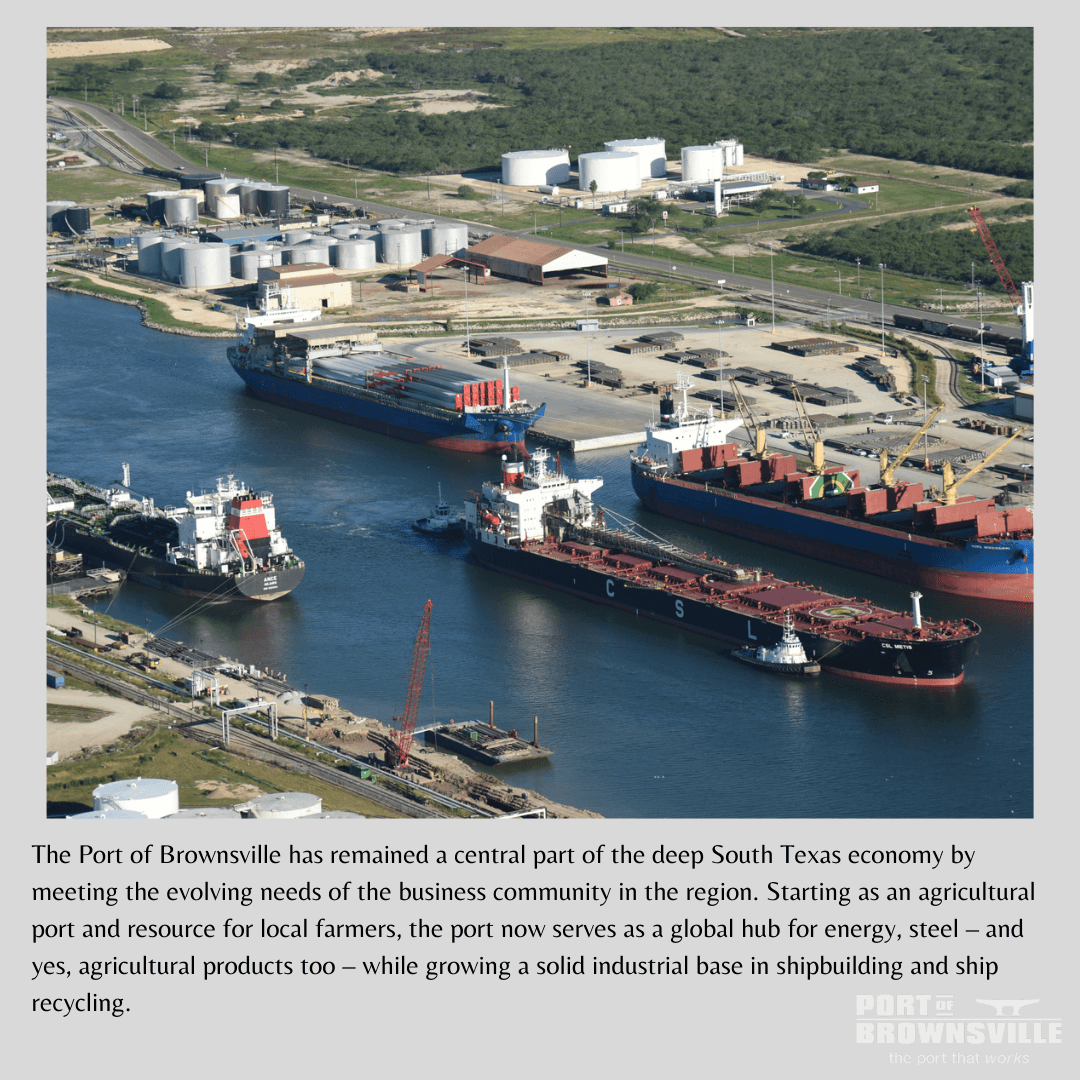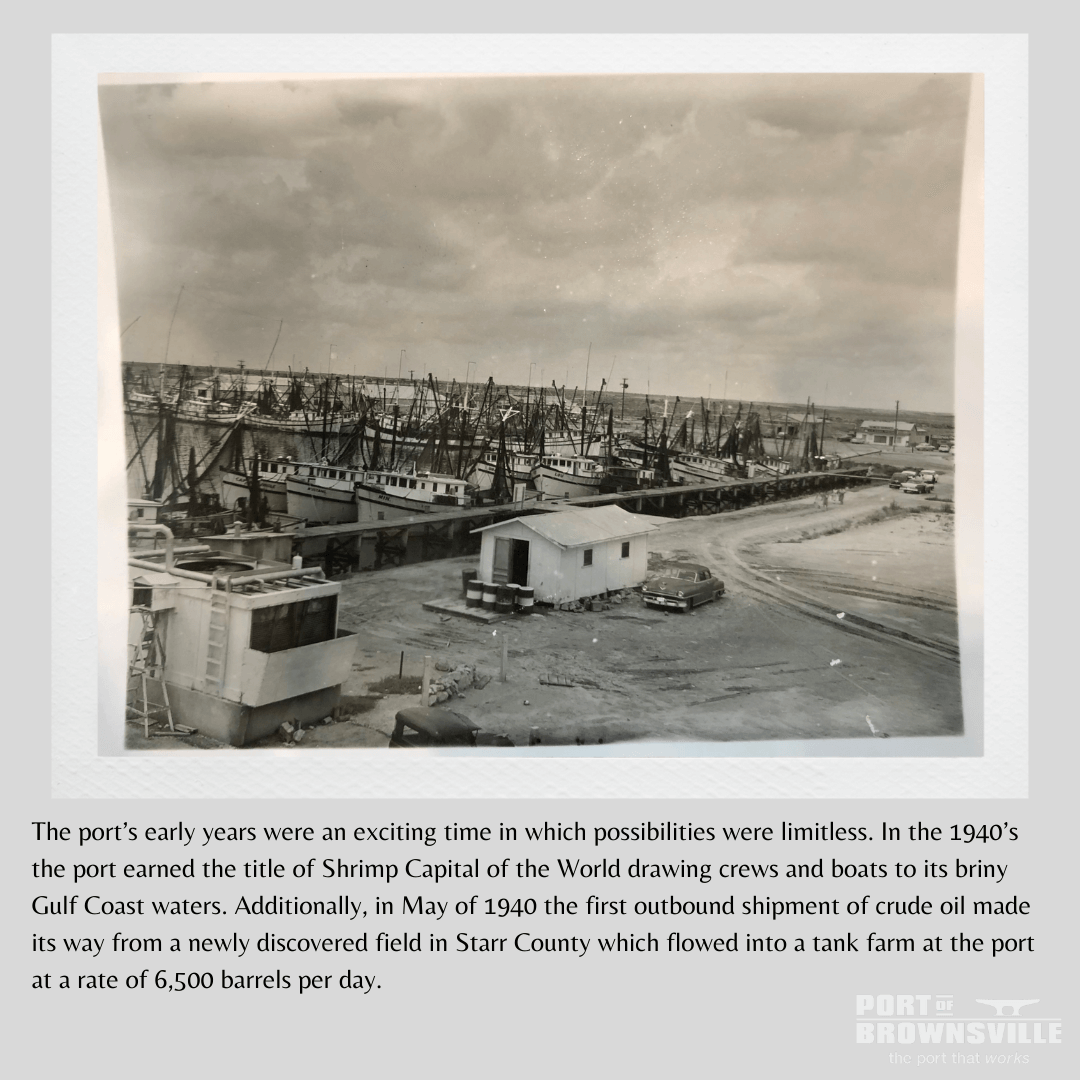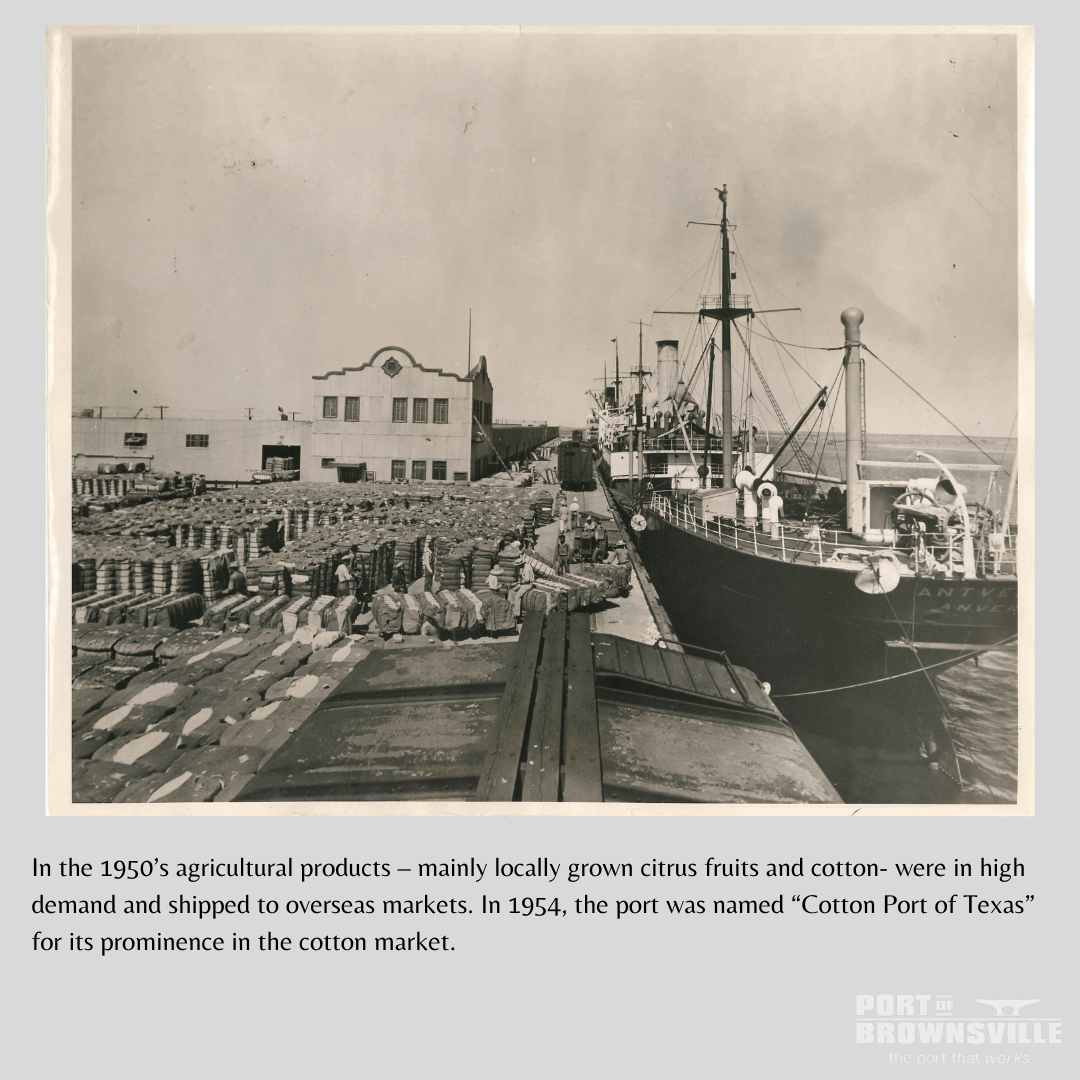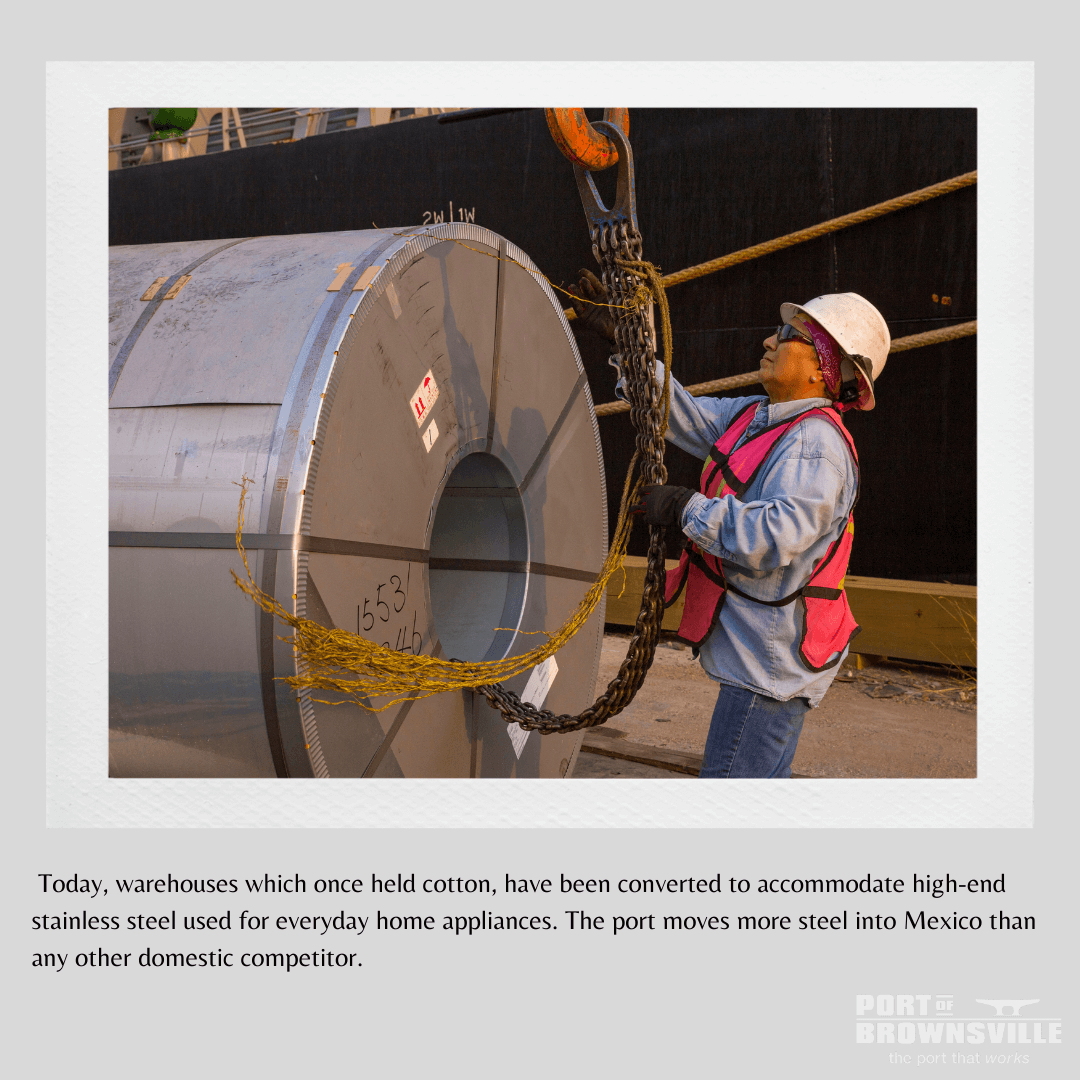BROWNSVILLE, Texas – The U.S. Army Corps of Engineers celebrated Friday, March 15, the completion of the decommissioning and dismantling of the historic STURGIS vessel that was formerly the world’s first floating nuclear power plant. This was marked by the final section of the former vessel being segmented and brought ashore for processing and recycling at the International Shipbreaking facility in the Port of Brownsville.
“We’re extremely proud of the work the team has done on the STURGIS decommissioning and dismantling,” said U.S. Army Corps of Engineers Project Manager Brenda Barber. “I also want to take this opportunity to thank the local Galveston and Brownsville communities and our local partners and stakeholders for their support as we implemented this complex project in both communities. The local support our team has received greatly contributed to the success of this project.”
The Army converted the STURGIS from a World War II Liberty Ship to a mobile nuclear plant in the1960s. It was deactivated and partially decommissioned in 1976 and subsequently safely stored in the James River Reserve Fleet at Joint Base Langley Eustis, Virginia until being towed to Galveston, Texas in 2015 for its final decommissioning and dismantling. From 2015 to 2018, the U.S. Army Corps of Engineers and it prime contractor, APTIM Federal Services, implemented the challenging and complex efforts to decommission the MH-1A – the deactivated nuclear reactor that was onboard the STURGIS vessel.
In Galveston, the vessel underwent radiological decommissioning that included the safe removal of all components of the deactivated nuclear reactor and all associated radioactive waste that was formerly onboard the STURGIS.
As part of the radiological decommissioning in Galveston, the U.S. Army Corps of Engineers safely removed and shipped more than 1.5 million pounds of radioactive waste and recycled more than 600,000 pounds of lead. Throughout the project, continuous environmental monitoring was performed and the results confirmed there was no evidence of radioactive material, lead or increased radiation exposure from the STURGIS project during its time in the Port of Galveston.
With the successful removal of all radioactive waste from the STURGIS and extensive radiological surveys that confirmed all radioactive waste had been removed, the STURGIS was cleared to be towed to Brownsville for traditional shipbreaking and departed Galveston in September 2018.
Since all of the radiological contamination was previously removed from the STURGIS, the International Shipbreaking facility in the Port of Brownsville was able recycle the entire vessel. Based on the current information, U.S. Army Corps of Engineers officials estimate approximately 5,800 tons of steel and other assorted metals from the ship will have been recycled.
Now that all of the physical field work has been completed, the team will focus on the Project Closure Report and subsequent Decommissioning Permit termination. Additionally, the team will be completing the necessary Historical Mitigation to document the history of the STURGIS.
STURGIS History/Background
The STURGIS has had a unique life since first being built in the 1940’s as a World War II Liberty Ship, the SS Charles H. Cugle. After serving in World War II, the ship was converted into the world’s first floating nuclear plant in the 1960’s, housing the MH-1A nuclear reactor. Before being shut down in 1976, the STURGIS’ nuclear reactor was used to generate electricity for military and civilian use in the Panama Canal. The reactor was de-fueled, decontaminated for long-term storage, and sealed before being towed to the James River Reserve Fleet at Joint Base Langley Eustis, Virginia; where it was stored and maintained since 1978, except for times of periodic dry dock maintenance. In 2012, its formal decommissioning effort began as part of a broader effort to decommission the Army’s retired nuclear reactors through the Army Deactivated Nuclear Power Plant Program. After award of the decommissioning project contract, the STURGIS was ultimately towed 1,750 miles from Virginia to Galveston, Texas in April 2015 for its final decommissioning.
That decommissioning effort was completed summer 2018 summer with the safe removal of all components of the deactivated nuclear reactor and associated radioactive waste that was formerly aboard the STURGIS. The vessel was towed to Brownsville, Texas in September 2018 for final traditional shipbreaking, which was completed in March 2019.
Historical Imagery and B-Roll Footage Available: https://drive.google.com/open?id=1vrQ_eN9lV5-hVvfpdhHFV5yJjklev9pn
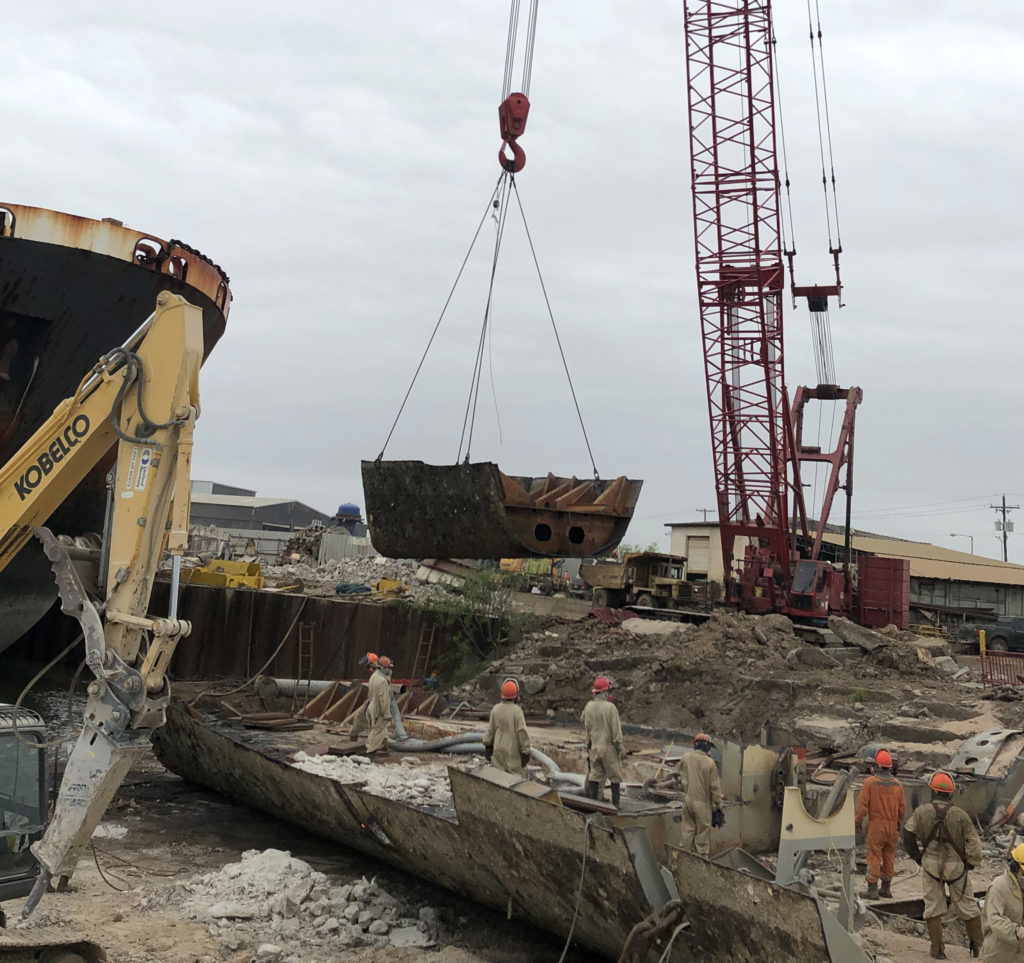
The final piece of the STURGIS is lifted from the Brownsville Ship Channel at the International Shipbreaking, Ltd yard at the Port of Brownsville. U.S. Army Corps of Engineers officials estimate approximately 5,800 tons of steel and other assorted metals from the ship will have been recycled (Photo courtesy USACE).




